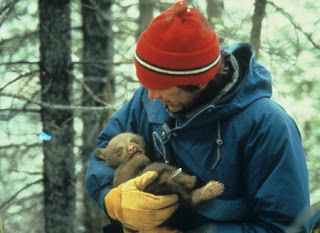Stefan Ekernas awarded 2011 Boyd Evison Graduate Fellowship.
April 28, 2011
11-26
Grand Teton National Park and the Grand Teton Association (GTA) are pleased to announce that Stefan Ekernas has received the Boyd Evison Graduate Fellowship for 2011. Ekernas, the seventh recipient of an Evison Fellowship, is currently pursuing a Ph.D. degree in Wildlife Biology at the University of Montana in Missoula. He plans to use his fellowship award to study the impacts of climate change on food webs in the southern Greater Yellowstone Ecosystem (GYE), looking specifically at white-tailed jackrabbits (Lepus townsendii) and pronghorn (Antilocapra Americana). The Evison Graduate Fellowship began in 2005 to support studies throughout the Greater Yellowstone Area.
Ekernas received a Bachelor of Arts in Government from Dartmouth College in 2001, a Master of Arts in Conservation Biology from Columbia University in 2005, and a Master of Science in Organismal Biology and Ecology from the University of Montana in 2010. He served as research director for WildMetro, a non-profit group in New York City focused on urban ecology, and he worked as an adjunct lecturer at Baruch College in Manhattan. Prior to moving to Montana, he worked as a research associate at Christian Medical College in Tamil Nadu, India. His past research focused on the effects of urbanization on small mammal communities in New York City, and the interface between conservation and public health in India.
Ekernas’ research in the GYE will focus on both food webs and climate change as he seeks to investigate species interactions within and beyond protected areas. He and his team will explore the relationships between white-tailed jackrabbits, wolves, coyotes, and pronghorn—with a specific focus on jackrabbits and pronghorns. A key member of the food web, jackrabbits have already disappeared from parts of the ecosystem. To investigate the impacts of climate change on food webs, Ekernas will look at the relationship between decrease in snowpack and jackrabbit population. When completed, he will make his findings available to Grand Teton and to the public. He also intends to give public lectures as his research progresses.
The Evison Fellowship was established in memory of Boyd Evison after his death in October, 2002, and created to honor Boyd’s extensive and dedicated service to both the National Park Service (NPS) and the GTA. Evison retired in 1994 from an exemplary 42-year career with the NPS and soon after began a second career as executive director for the GTA—a non-profit park partner dedicated to aiding interpretive, educational, and research programs for Grand Teton National Park
The Evison Fellowship program encourages scientific and conservation-related research in national parks. It invites highly motivated, graduate students to conduct research in Grand Teton and throughout the Greater Yellowstone Area; and it supports study leading to a master’s or Ph.D. degree in the biosciences, geosciences or social sciences. Upon program completion, Evison recipients provide a copy of their thesis to the GTA and often share their results through oral presentations to park staff and partners.
An Evison Fellowship provides tuition assistance and a yearly stipend to cover travel and field research costs; Grand Teton National Park



















